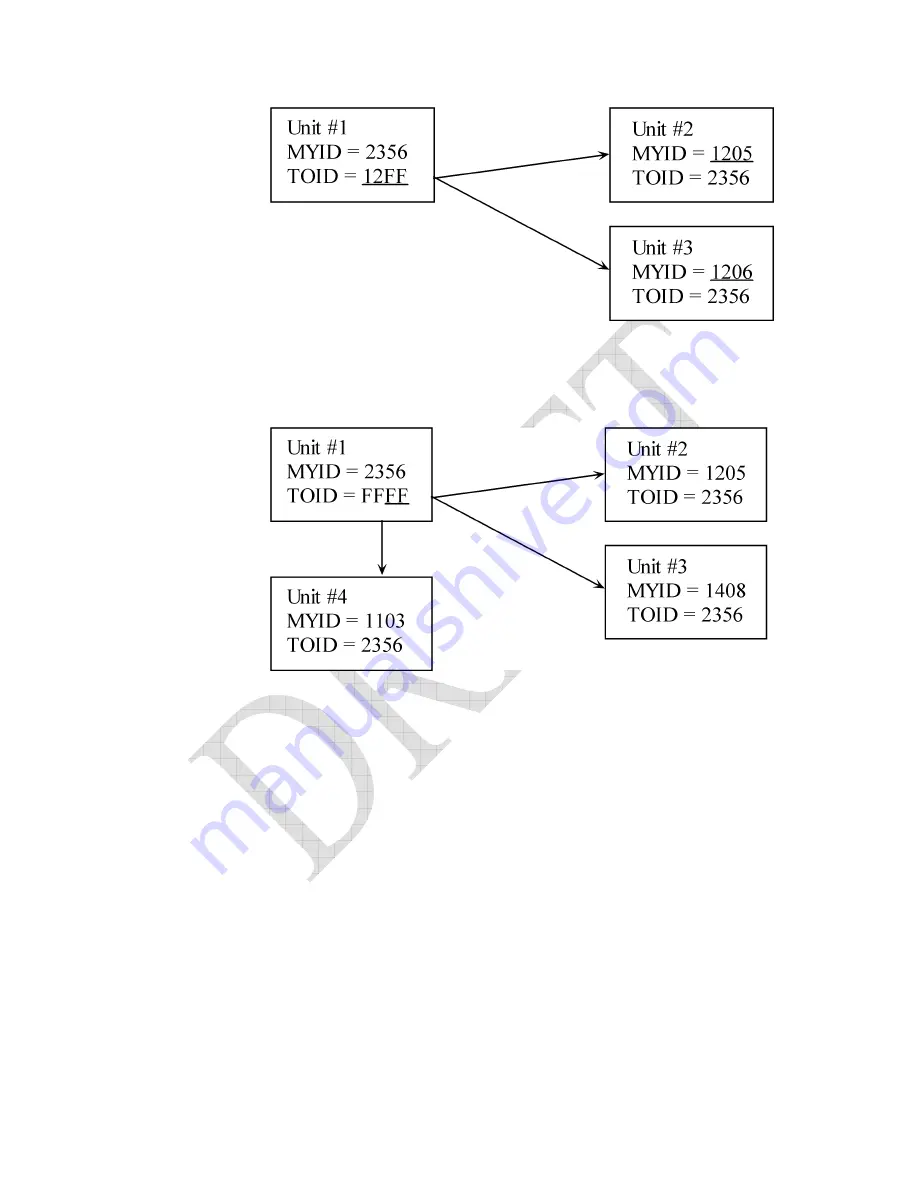
RF Neulink
19
NL6000 User Guide
Figure 8: Addressing with Wildcards
Figure 9 shows the use of a wildcard (FFFF) to broadcast data to all units
within range of Unit #4.
Figure 9: Using Wildcards to Broadcast
5.5.
Behavior of Repeater Units
When configured as a repeater, the unit listens for packets that qualify for
repeating – in addition to its normal functions. A unit qualifies a packet for
repeating based upon the TOID or MYID value associated with the packet.
The trigger for repeating a packet from a base station to a remote is the
value in the packet’s TOID field. The trigger for repeating a packet from a
remote to a base station is the value in the packet’s MYID field. You can
establish up to eight triggers for each repeater unit.
Consider the following example of a repeater (MYID3000) configured to
repeat packets transmitted from a base station (MYID2000) to a hidden
remote (MYID4203). Unit MYID3000 is configured with a repeater entry
that has a Trigger = TOID and ID = 4203. This entry tells unit MYID3000
to listen for packets that have a destination address of TOID4203. If the
repeater receives a packet matching the criteria, it immediately repeats the
packet. Figure 10 illustrates this scenario.
Summary of Contents for NL6000
Page 1: ......
Page 39: ...RF Neulink 39 NL6000 User Guide 7 Menu Quick Reference 7 1 Main Menu 7 2 Summary Window ...
Page 40: ...RF Neulink 40 NL6000 User Guide 7 3 Serial Menu 7 4 DCD232 SubMenu ...
Page 41: ...RF Neulink 41 NL6000 User Guide 7 5 Network Menu 7 6 Repeater SubMenu ...
Page 42: ...RF Neulink 42 NL6000 User Guide 7 7 Radio Menu 7 8 Diagnostics Menu ...
Page 43: ...RF Neulink 43 NL6000 User Guide 7 9 Save Restore Parameters Menu ...















































